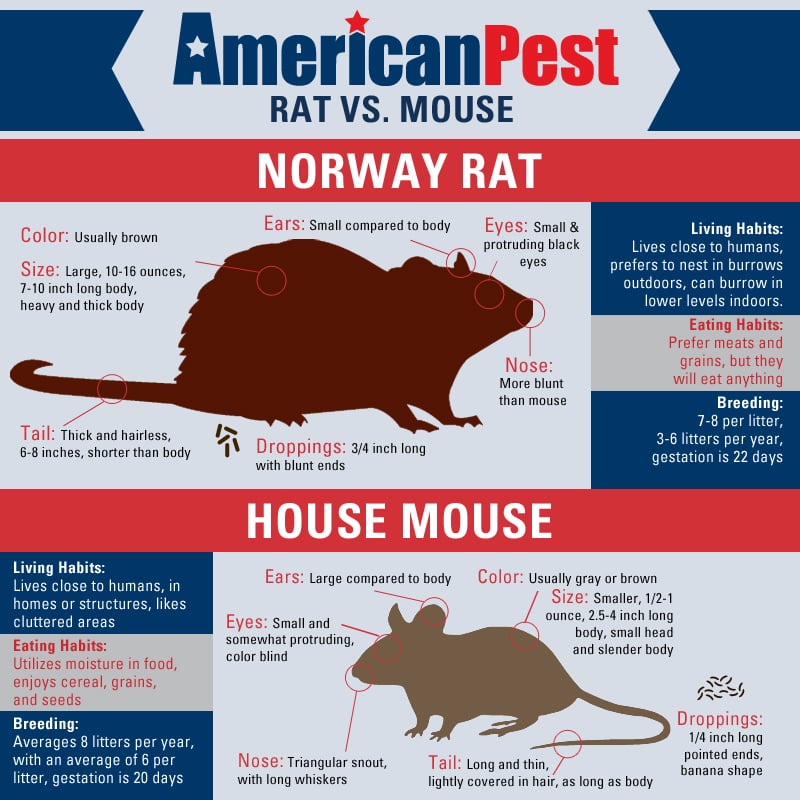Get a free estimate
If you have questions about our services, plans, or pricing we are here for you. Fill out the form below and we will communicate with you by email (and of course provide you with a free estimate).
FEBRUARY 01 2022 /
During winter months, rodents go to great lengths to secure a warm home with plenty of food to outlast the cold temperatures.
When homeowners discover that they have a rat or mouse problem it is easy to panic and become concerned about diseases, parasites, and bacteria that rodents may be carrying around the home.
This is a problem that most want to solve as quickly as possible.
When mice or rats invade a home or business, it is common for them to be mistaken for each other. Being able to differentiate the two will allow homeowners and professionals to put the best treatment into place.
Learn how to identify the distinct differences between the norway rat and the house mouse from the entomologists at American Pest.

Visually, a rat is much longer than the common house mouse. Its body appears to be much broader and longer. A rat’s tail is commonly found to be slightly shorter than the body but is much thicker and hairless compared to the tail of a mouse.
While a rat's body is considered to be large, its ears are surprisingly smaller compared to its body. A mouse, however, has ears that are large compared to the body.
Rodent droppings, while gross, may be the only evidence that you have of these four-legged vermin. Thankfully, examining these droppings may help you to identify the rodent quickly.
House mouse droppings are approximately one-quarter of an inch in length (about the size of a grain of rice) with pointy ends.
Norway rat droppings are usually larger (about the size of a kidney bean) with more blunt ends. It is common to find mouse droppings in many areas of the home, such as pantry shelves, under the stove, or along kitchen counters — any place that a mouse travels and eats.
Due to their small size, you may not hear mice running through your kitchen, however, it is common to hear activity from rats as they travel through walls or gnaw (chew) on objects to maintain the sharpness of their teeth.
Both mice and rats are more active at night than during the day.
If you are hearing a lot of activity in the walls during daylight hours, you may want to consider that your problem is wildlife-related—such as a squirrel or raccoon.
Damage caused by rodent teeth may be limited to smaller areas with mice, but with a rat infestation, it is not at all uncommon for these invaders to chew through drywall, leaving tennis-ball sized holes.
Mice and rats will get into food products you have in storage, although mice are more likely to collect and store food in proximity to where they nest.
Both the mice and rats are considered to be communal creatures, meaning they live in close proximity to people. And, they are often difficult to get rid of due to their reproductive habits.
If mice or rats pose a threat to your home and loved ones, do your research and learn how to protect yourself from damaging household pests. Contact American Pest to help you evict the rodents in your home, seal entry points, and stay rodent free.